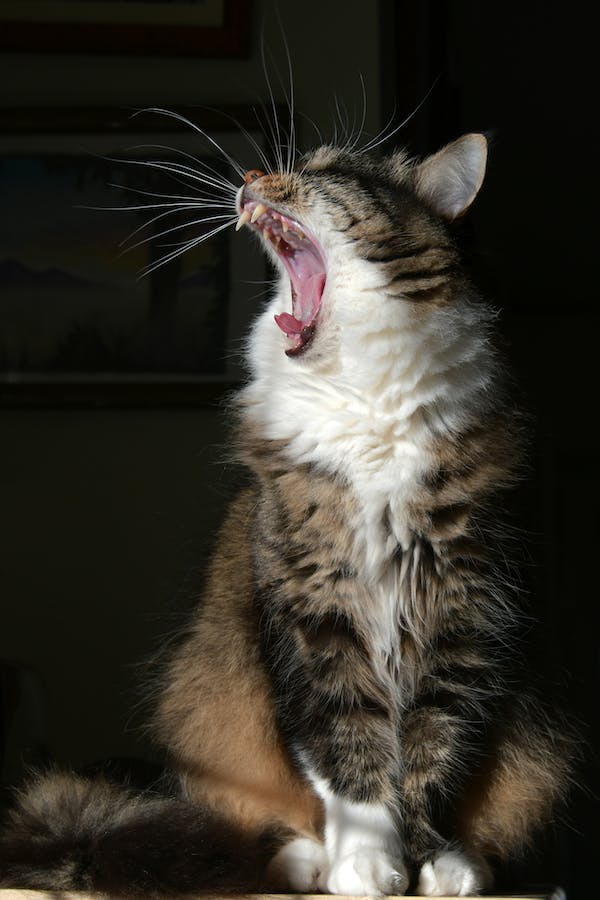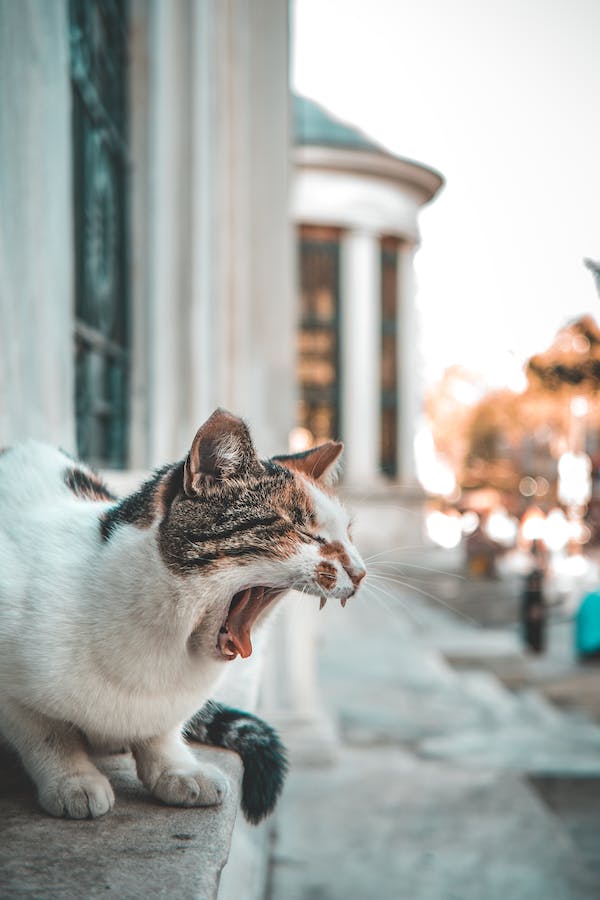
For those who share their homes with feline companions, you might have observed your cat exhibiting a peculiar facial expression when encountering intriguing scents.
This behavior is identified as the Flehmen response and is entirely natural for cats.
This article delves into understanding what the Flehmen response entails, how it manifests, and the reasons behind why cats engage in this behavior.
What Is the Flehmen Response?
The Flehmen response is a behavior observed in cats, as well as other animals when they encounter intriguing scents.
When a cat detects an interesting smell, it engages in this response by slightly opening its mouth and curling the upper lip, revealing the front teeth.
This action facilitates the passage of air through the vomeronasal organ, also known as the VNO or Jacobson’s organ, located on the roof of the cat’s mouth.
The VNO is a specialized organ designed to detect pheromones, chemical signals that animals utilize for communication with each other.
- Read also: How to Fix Cat Behavior Problems
- Read also: Tips to Keep Your Senior Feline Happy

What Does the Flehmen Response Look Like?
The Flehmen response manifests as a distinctive expression, resembling either a grimace or a sneer.
During this behavior, the cat curls its upper lip and keeps its mouth open.
In some instances, the cat may extend its neck or elevate its head.
This pose is maintained briefly before the cat returns to its normal position.
It’s important to distinguish this behavior from panting, as cats do not pant like dogs.
The Flehmen response is a unique and brief facial expression observed in response to intriguing scents.
What is the Purpose of the Flehmen Response?
The Flehmen response serves as a vital tool for cats to interpret messages conveyed through intriguing scents, typically pheromones emitted by other cats.
This behavior is notably utilized by male cats to assess a female’s receptiveness to mating, primarily by detecting the pheromones present in her urine.
Beyond reproductive purposes, cats may employ the Flehmen response to explore other captivating scents, including those emanating from food or unfamiliar objects.
In essence, the Flehmen response is a versatile mechanism that allows cats to gather valuable information from their olfactory surroundings.

Why Do Cats Open Their Mouth When They Smell?
The act of a cat opening its mouth while sniffing serves a specific purpose—it facilitates the passage of air through their vomeronasal organ.
Situated on the roof of their mouth, this organ is specialized for detecting pheromones, which are chemical signals crucial for animal communication.
By parting their lips, cats optimize their ability to capture and process these chemical cues, enabling a more intricate understanding of their olfactory environment.
Essentially, this unique behavior is an adaptive mechanism that enhances a cat’s capacity to decipher the intricate language of pheromones.
Is the flehmen response in cats good?
The Flehmen response in cats is a natural and voluntary behavior that allows them to gain more information about scents and odors in their environment.
It is not a sign of distress or discomfort.
Cats utilize the Flehmen response to detect pheromones and other critical chemical stimuli, and it is a useful behavioral response that cats possess.
The response is a way for cats to investigate scents and process messages carried by pheromones, and it is entirely normal and nothing to worry about.
The Flehmen response is not unique to cats and is also observed in other animals, such as horses, buffalo, snakes, goats, and tapirs.
Therefore, the Flehmen response is a natural and normal behavior in cats and serves as a valuable tool for them to process and interpret chemical signals in their environment.
- Read also: Male vs Female Cat Behavior
- Read also: Rescue Cat Behavior: A Guide to Happy Feline Companionship

Conclusion
The Flehmen response is a completely natural and normal behavior in cats, serving as their unique way of exploring captivating scents and decoding messages carried by pheromones.
Though it may resemble a grimace or a sneer, it holds significant importance within a cat’s communication and sensory system.
This behavior plays a crucial role in their ability to navigate and interpret the olfactory intricacies of their surroundings.
FAQs
The vomeronasal organ (VNO) is a specialized organ located on the roof of a cat’s mouth that detects pheromones, which are chemical signals that animals use to communicate with each other.
Male cats use the Flehmen response to detect the pheromones in a female’s urine, which can indicate her readiness to mate.
No, the Flehmen response is observed in many other animals, including horses, buffalo, snakes, goats, tapirs, and more.
No, the Flehmen response is a natural and normal behavior for cats and is not an indication of pain or distress.


GIPHY App Key not set. Please check settings